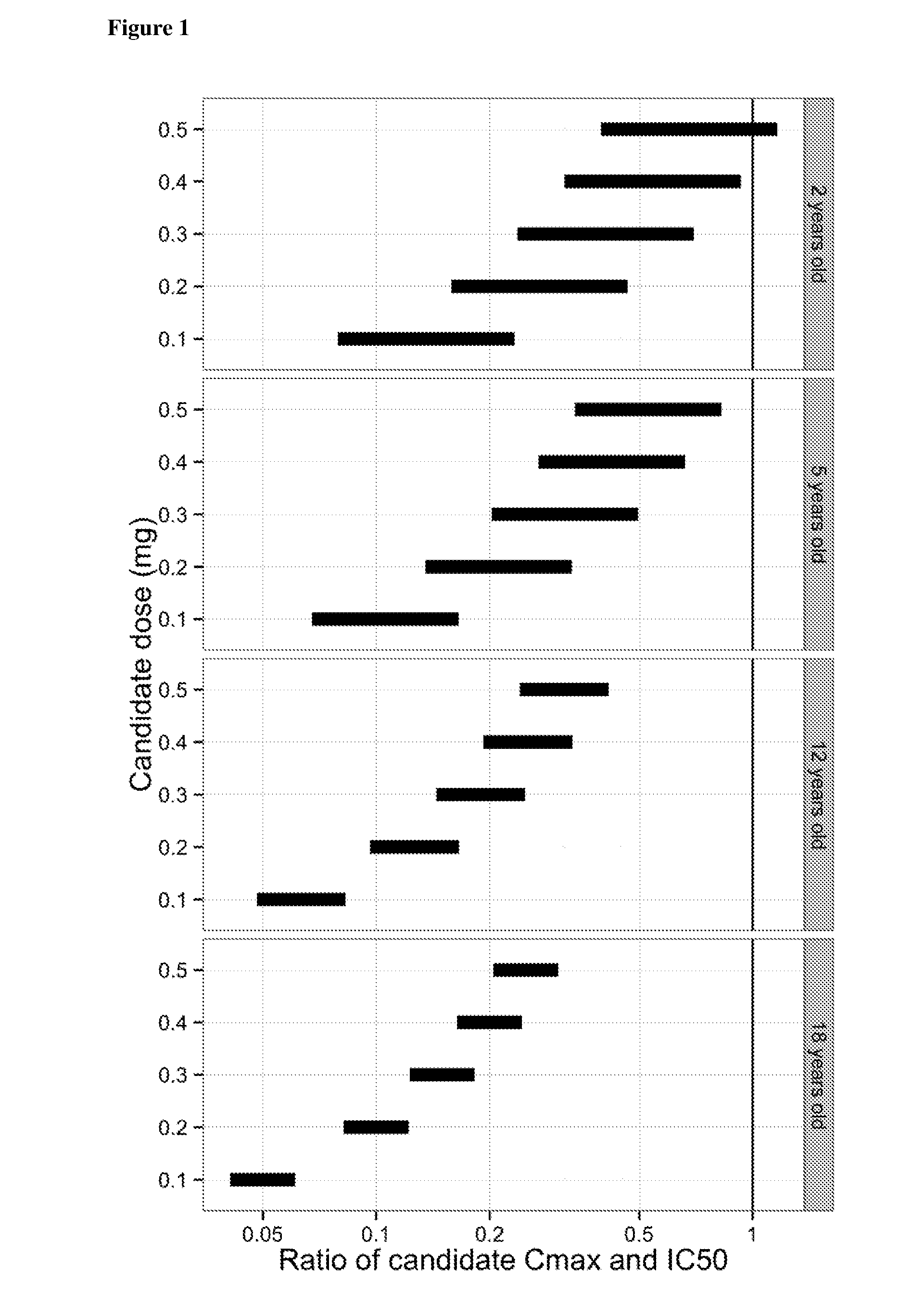Use of VEGF antagonist in treating chorioretinal neovascular and permeability disorders in paediatric patients
a technology of chorioretinal neovascularity and permeability, which is applied in the field of treating children's retinal disorders, can solve the problems that prolonged systemic vegf suppression may have unwanted side effects on normal development, and achieve the effect of preventing recurrence of cnv and reducing the handling of the ey
- Summary
- Abstract
- Description
- Claims
- Application Information
AI Technical Summary
Benefits of technology
Problems solved by technology
Method used
Image
Examples
example 1
A Pharmacokinetic Model for Predicting the Ocular and Systemic Exposure to Intravitreally Administered Ranibizumab in Children
[0104]To model the ocular and systemic exposure to ranibizumab in children, two key relationships were established based on published data:[0105]1. A relationship between the age of a child and the vitreous chamber depth and density of the vitreal gel to predict the ocular clearance rate and vitreal concentration;[0106]2. A relationship between age and body weight of a child, and PK parameters of systemic disposition (allometric scaling) to predict the systemic concentration.
[0107]Vitreal concentration of ranibizumab was calculated using the volume of the vitreous body. It was calculated as the volume of a partial sphere whose height equals the vitreous chamber depth (VCD) and whose diameter equals the axial length (AL) of the eye. The VCD of children and adults was age-correlated using a piecewise linear regression model and published data for children up to...
example 2
Ranibizumab Dose Determination for Treating Children with Chorioretinal Neovascular and Permeability Disorders
[0112]Using the pharmacokinetic model described in Example 1, the predicted ocular and systemic exposure in children receiving intravitreally administered ranibizumab was compared to the exposure in adults following intravitreal injection of 0.5 mg ranibizumab, since the efficacy and safety profiles for adults at this dose level and mode of administration are known.
[0113]Exposure ratios to ranibizumab were calculated for three different parameters: (i) the maximum concentration (Cmax) in serum, which provides a measure of acute toxicity, (ii) the area under the curve (AUC) in serum, which provides a measure of potential long-term toxicity associated with continual inhibition of systemic VEGF, and (iii) the AUC in the vitreous which provides a measure of efficacy associated with continual inhibition of VEGF in the eye.
[0114]The ratio of predicted exposure in children to expos...
example 3
[0117]Forty-five eyes of thirty-nine pediatric patients with choroidal neovascularization (CNV) were treated with intravitreal injection of anti-angiogenic agents (1.25 mg / 0.05 ml bevacizumab [40 eyes] or 0.5 mg / 0.05 ml ranibizumab [5 eyes]). Choroidal neovascularization due to various causes was clinically diagnosed and confirmed with imaging studies.
[0118]There were 24 females and 15 males with group median age 13 years (range 3-17years). Mean follow-up period was 12.8 months (range 3-60 months). The etiology of the CNV included idiopathic, uveitic, myopic CNV, and CNV associated with various macular dystrophies. Median logMAR visual acuity at presentation and last follow-up was 0.87 (Snellen equivalent 20 / 150) and 0.7 (Snellen equivalent 20 / 100), respectively which was statistically significant (p=0.0003). Mean and median number of injections received over the follow-up period was 2.2 and 1, respectively. At the last follow-up, 22 eyes of this group (48%) gained more than 3 lines...
PUM
| Property | Measurement | Unit |
|---|---|---|
| molecular weight | aaaaa | aaaaa |
| molecular mass | aaaaa | aaaaa |
| molecular weight | aaaaa | aaaaa |
Abstract
Description
Claims
Application Information
 Login to View More
Login to View More - R&D
- Intellectual Property
- Life Sciences
- Materials
- Tech Scout
- Unparalleled Data Quality
- Higher Quality Content
- 60% Fewer Hallucinations
Browse by: Latest US Patents, China's latest patents, Technical Efficacy Thesaurus, Application Domain, Technology Topic, Popular Technical Reports.
© 2025 PatSnap. All rights reserved.Legal|Privacy policy|Modern Slavery Act Transparency Statement|Sitemap|About US| Contact US: help@patsnap.com


